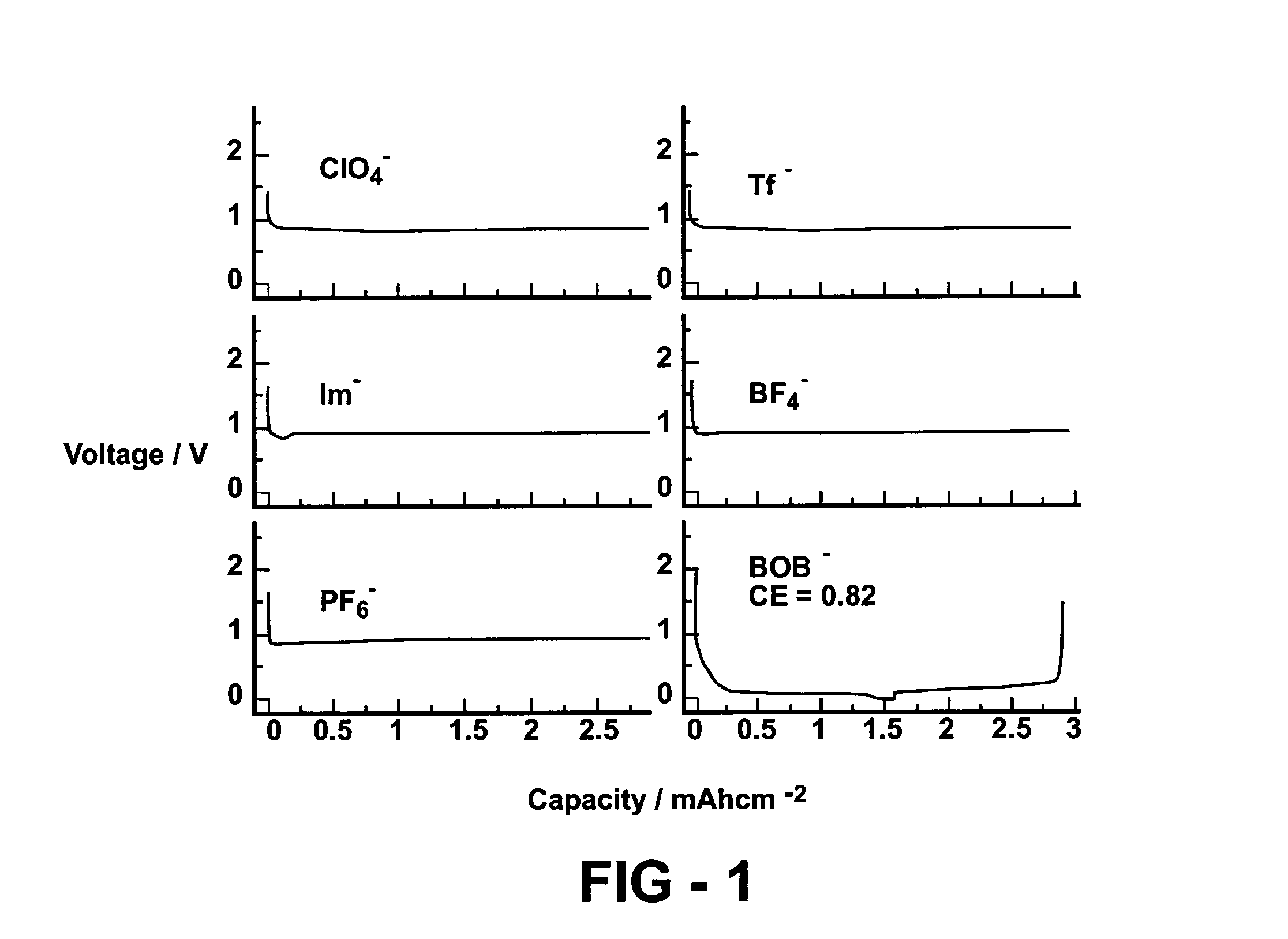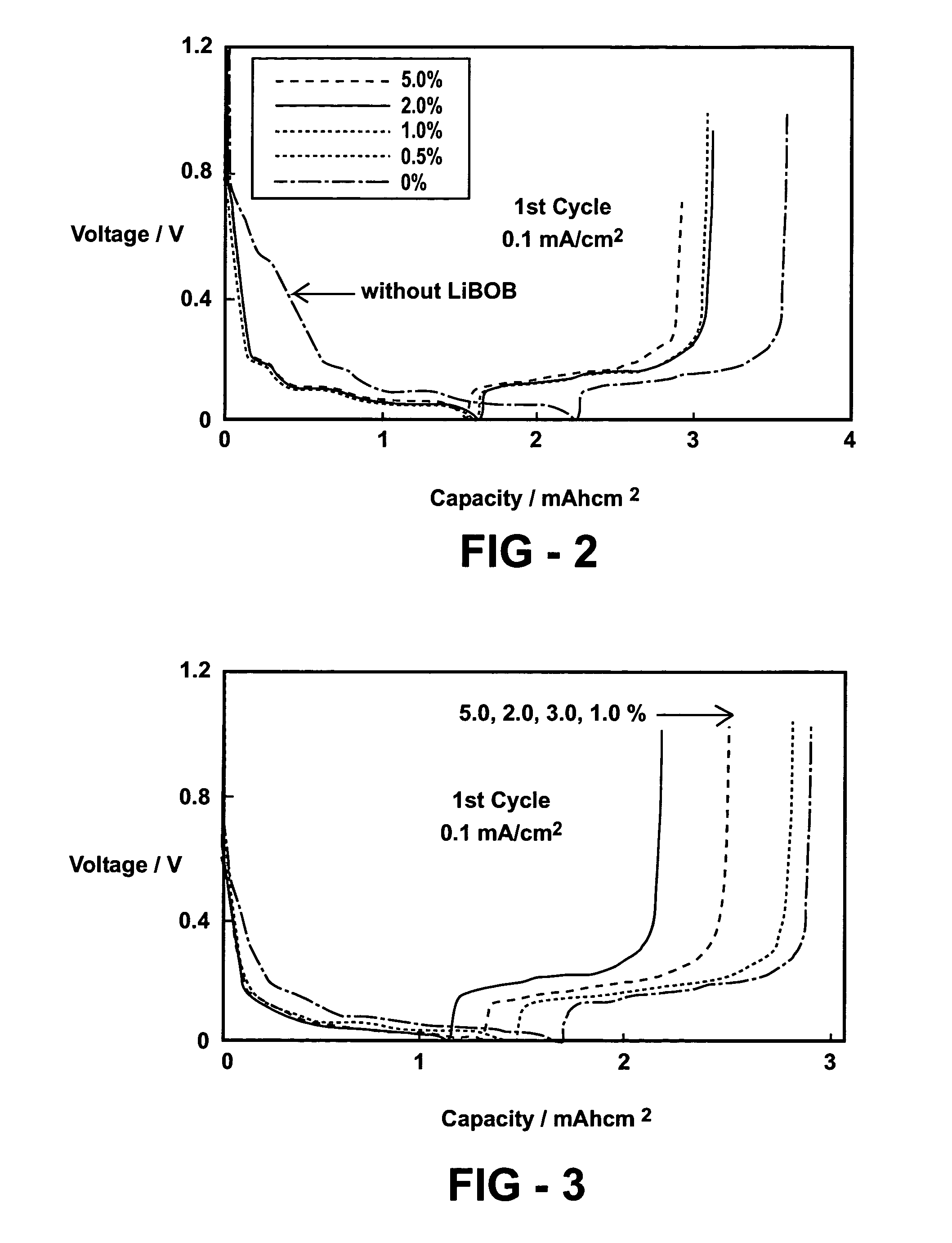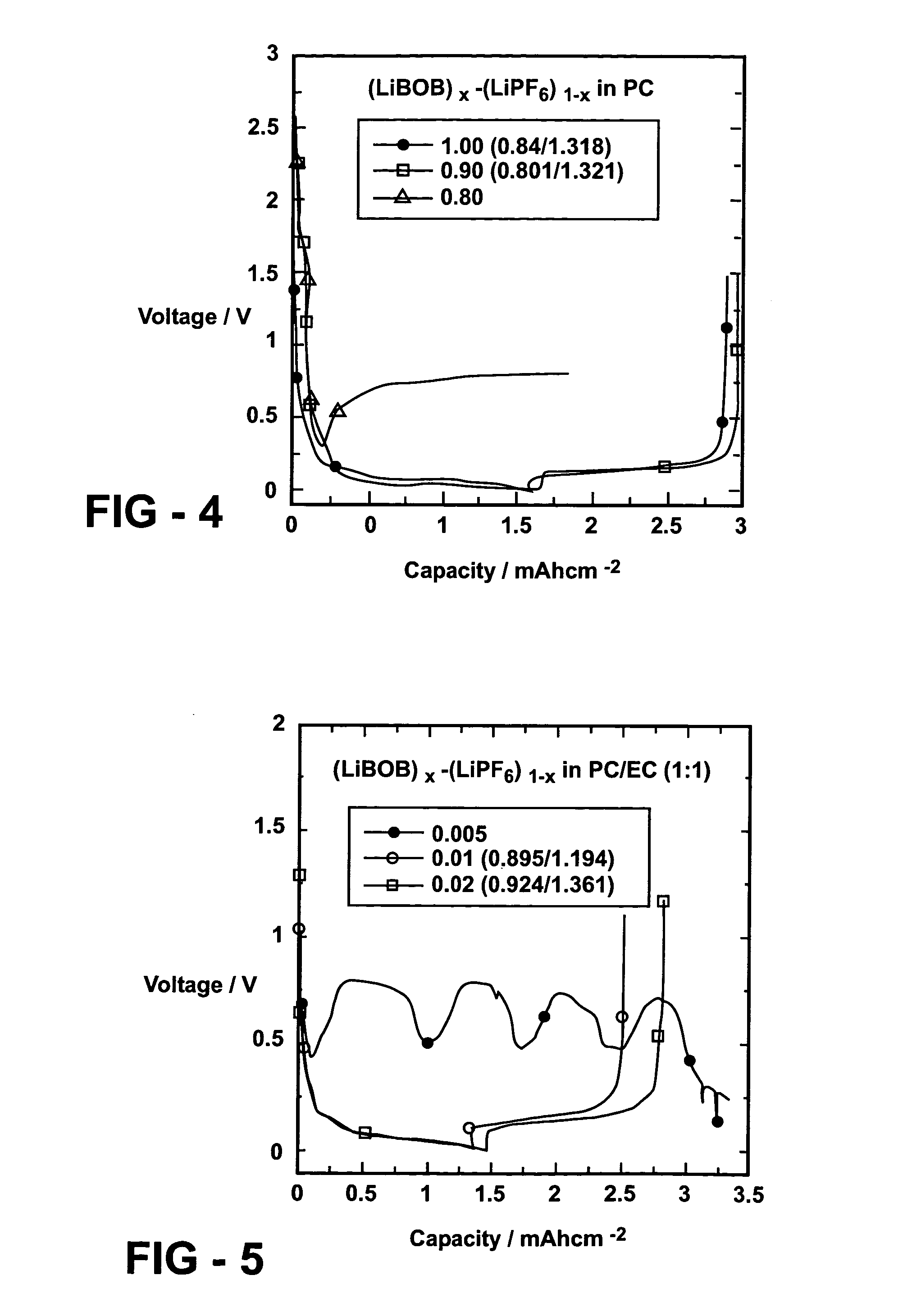Additive for enhancing the performance of electrochemical cells
a technology of electrochemical cells and additives, applied in the field of electrochemical cells, can solve the problems of affecting the operation of the cell, pc is not a preferred solvent in li-ion, carbonaceous anodes, etc., and achieves the effects of preventing the exfoliation of graphite, reducing solubility, and reducing conductivities
- Summary
- Abstract
- Description
- Claims
- Application Information
AI Technical Summary
Benefits of technology
Problems solved by technology
Method used
Image
Examples
example 1
Effect of LiBOB on SEI of Graphite in Neat PC Solution
[0048]The neat PC solutions of various Li salts, including the most popular LiPF6 and LiBF4, were tested in Li / graphite half-cells using a graphite electrode area of 1.27 cm2. The cells were galvanotatically cycled by first discharging (i.e., intercalating Li ion into graphite from a Li electrode or lithiation) at 0.1 mA / cm2 to 0.002 V and then charging (de-intercalating Li ion from graphite or de-lithiation) from 0.002 V to 1.0 V. The results are compared with the neat PC solution of LiBOB in FIG. 1. Apparently, none of the conventional Li salts can form an effective SEI film that prevents the exfoliation of graphite occurring at ca. 0.7˜0.8 V, and lithium ion intercalation can never occur in these electrolytes.
[0049]However, the salt that is chosen as the salt additive of this invention, LiBOB, successfully formed such an SEI, as evidenced by the reversible lithium ion intercalation and de-intercalation. This unexpected stabili...
example 2
Effect of LiBOB on Li / Graphite Half-Cells in Electrolyte A, 1 m LiBF4 in PC-EC-EMC (1:1:3 wt. Ratio)
[0051]The half-cells are made of Li metal as one electrode and graphite as the other electrode with a graphite electrode area of 1.27 cm2. These cells were each assembled and filled with 150 micro-liter (μL) of Electrolyte A or Electrolyte A containing different contents of LiBOB. The cells were galvanotatically cycled by first discharging (i.e., intercalating Li ion into graphite from Li electrode or lithiation) at 0.1 mA / cm2 to 0.002 V and then charging (de-intercalating Li ion from graphite or de-lithiation) from 0.002 V to 1.0 V. The subsequent cycles were made between 1.0 V and 0.002 V. The coulombic efficiency of the cycling is defined as the ratio of charge capacity to discharge capacity. The cell without LiBOB showed a rather low coulombic efficiency of 54.1% at the first cycle, while the cells containing more than 0.5 mole percent (m / o) of LiBOB showed much higher cycling eff...
example 3
Effect of LiBOB on the Li-ion Cells Made with a Graphite Anode and a Li Nickel Based Complex Oxide Cathode in Electrolyte A, 1 m LiBF4 in PC-EC-EMC (1:1:3 wt. Ratio)
[0054]The Li-ion cells with the anode and cathode areas of 1.27 cm2 and 0.97 cm2, respectively, were assembled. Each cell was filled with 150 μL of Electrolyte A or Electrolyte A containing different contents of LiBOB. The cells were first charged to 4.2 V at a rate of 0.1 mA / cm2 and then discharged to 2.7 V at the same rate. The cells were cycled continuously at the same conditions. As shown in Table 2, the cells in Electrolyte A with 1.0 m / o or less of LiBOB had coulombic efficiency of less than 50%, while the cells in Electrolyte A containing 2.0 m / o or more of LiBOB presented coulombic efficiencies of 77–84%.
[0055]
TABLE 2IrreversibleReversibleCoulombicCapacity,Capacity, 1stEfficiency1st Cycle,Discharge,(%) at 1stElectrolytemAh / cm2mAh / cm2Cycle1 m LiBF4 in PC-EC-EMC1.040.8545(1:1:3)(0.99 m LiBF4 + 0.01 m0.920.9246LiBOB...
PUM
 Login to View More
Login to View More Abstract
Description
Claims
Application Information
 Login to View More
Login to View More - R&D
- Intellectual Property
- Life Sciences
- Materials
- Tech Scout
- Unparalleled Data Quality
- Higher Quality Content
- 60% Fewer Hallucinations
Browse by: Latest US Patents, China's latest patents, Technical Efficacy Thesaurus, Application Domain, Technology Topic, Popular Technical Reports.
© 2025 PatSnap. All rights reserved.Legal|Privacy policy|Modern Slavery Act Transparency Statement|Sitemap|About US| Contact US: help@patsnap.com



